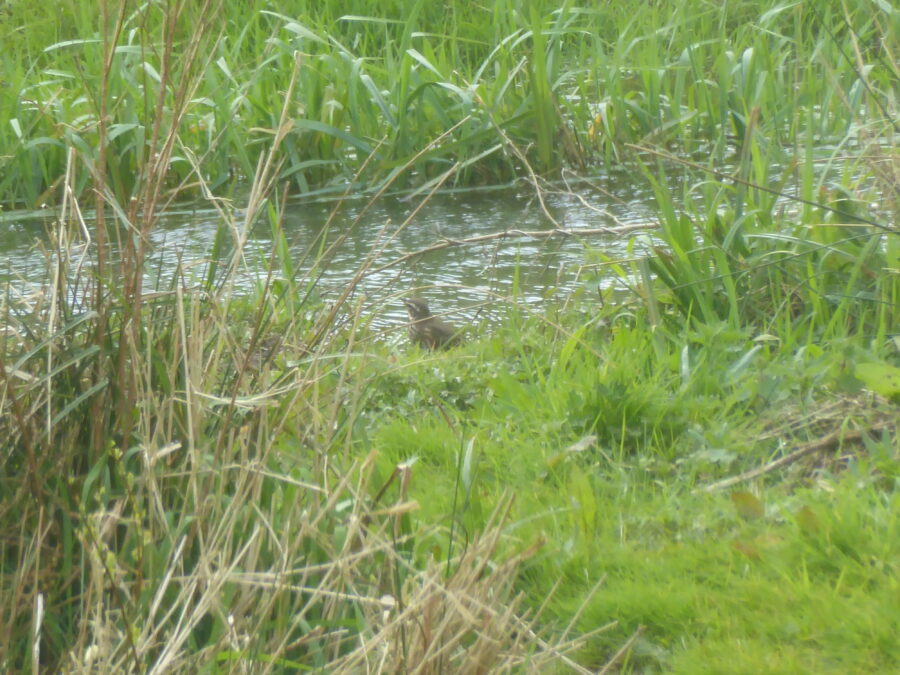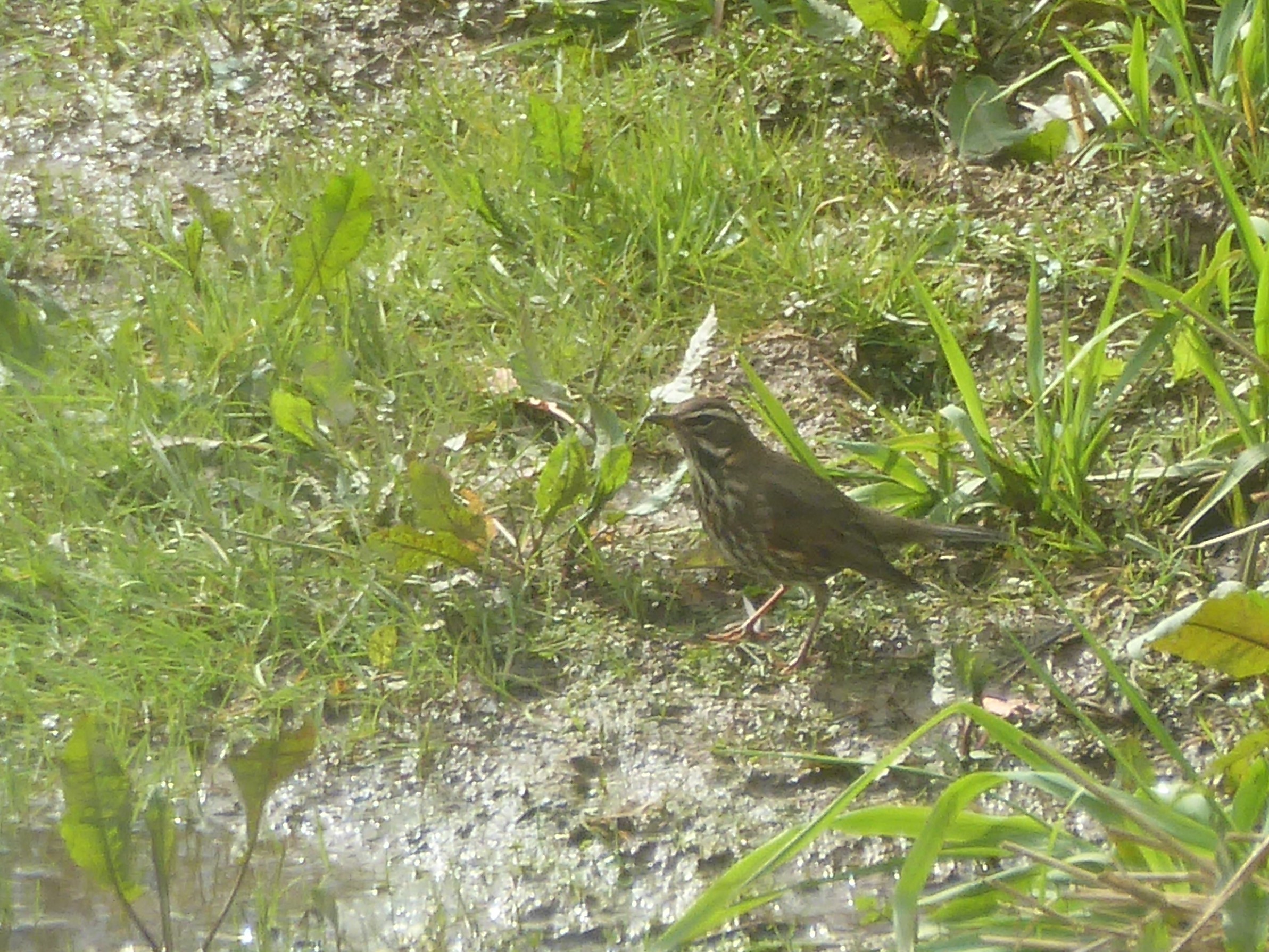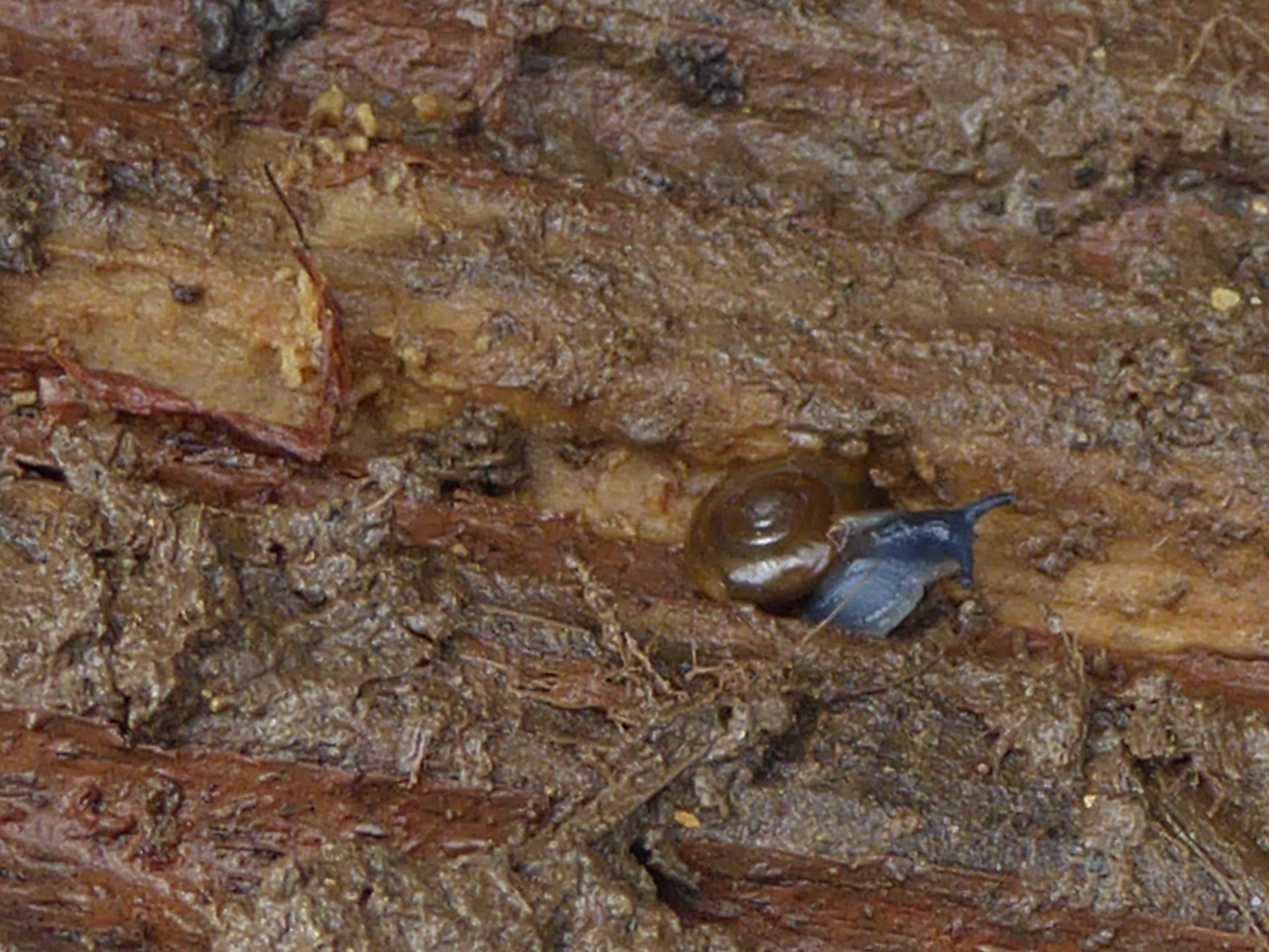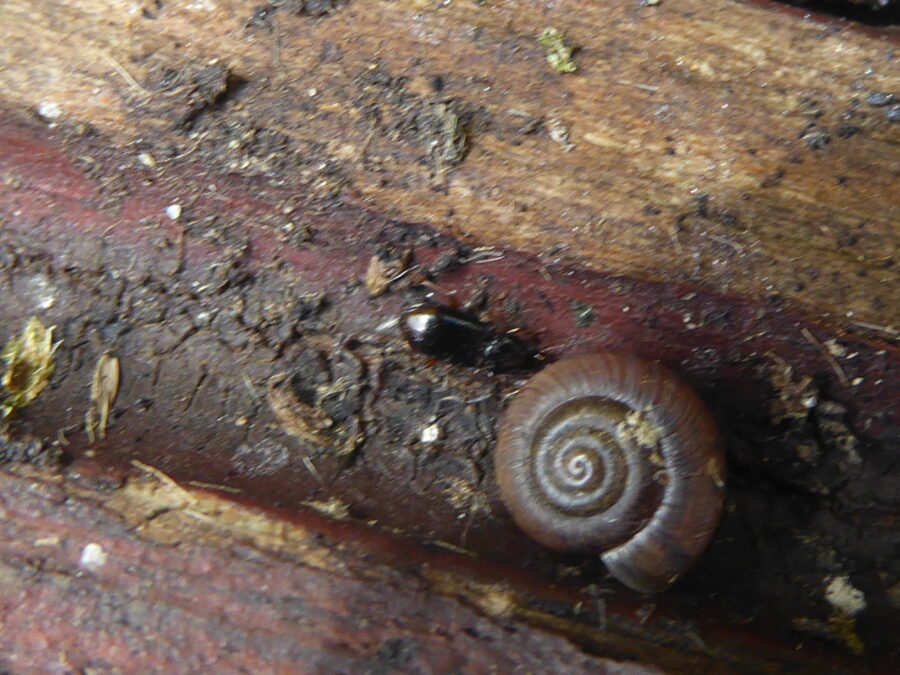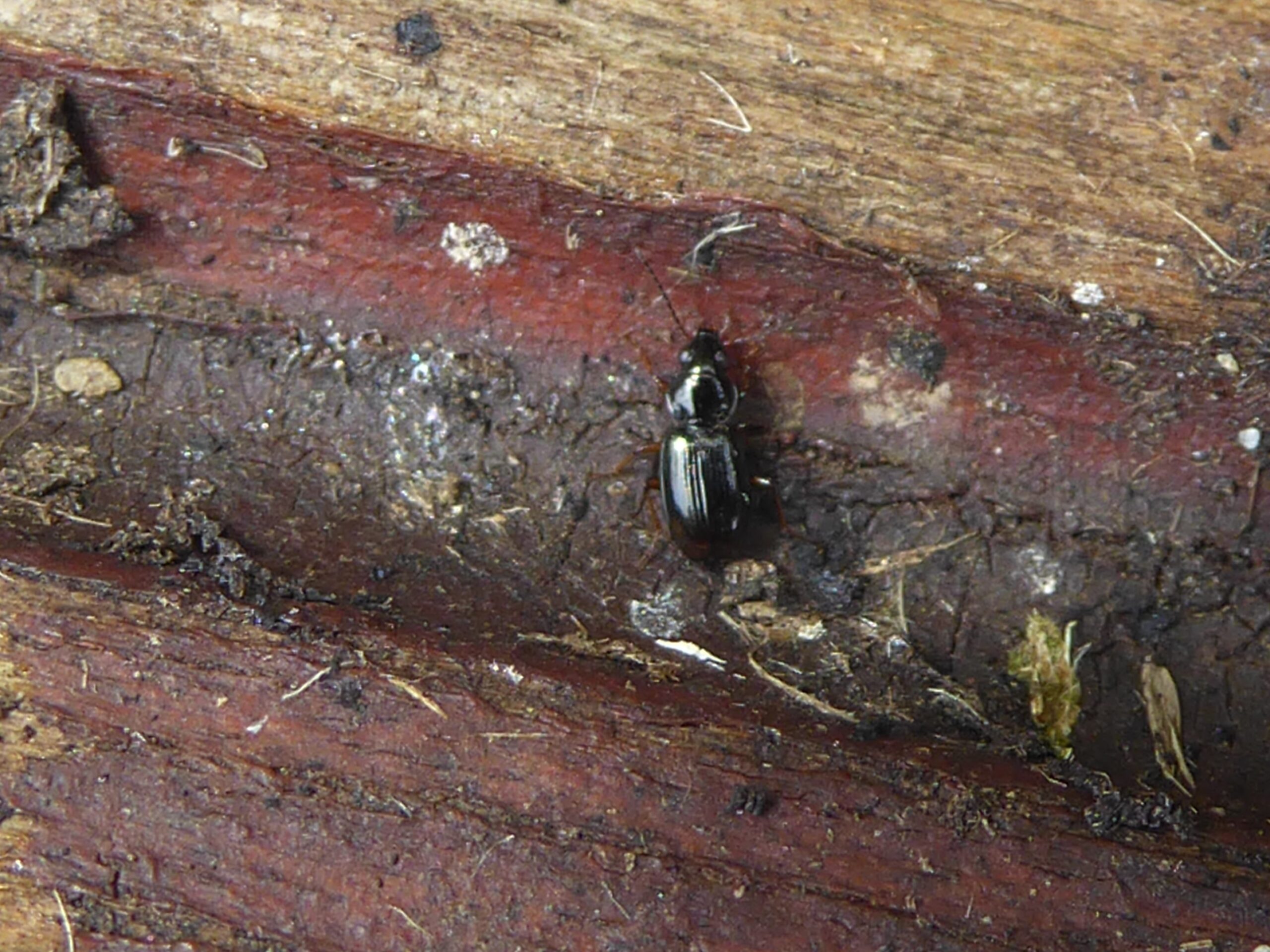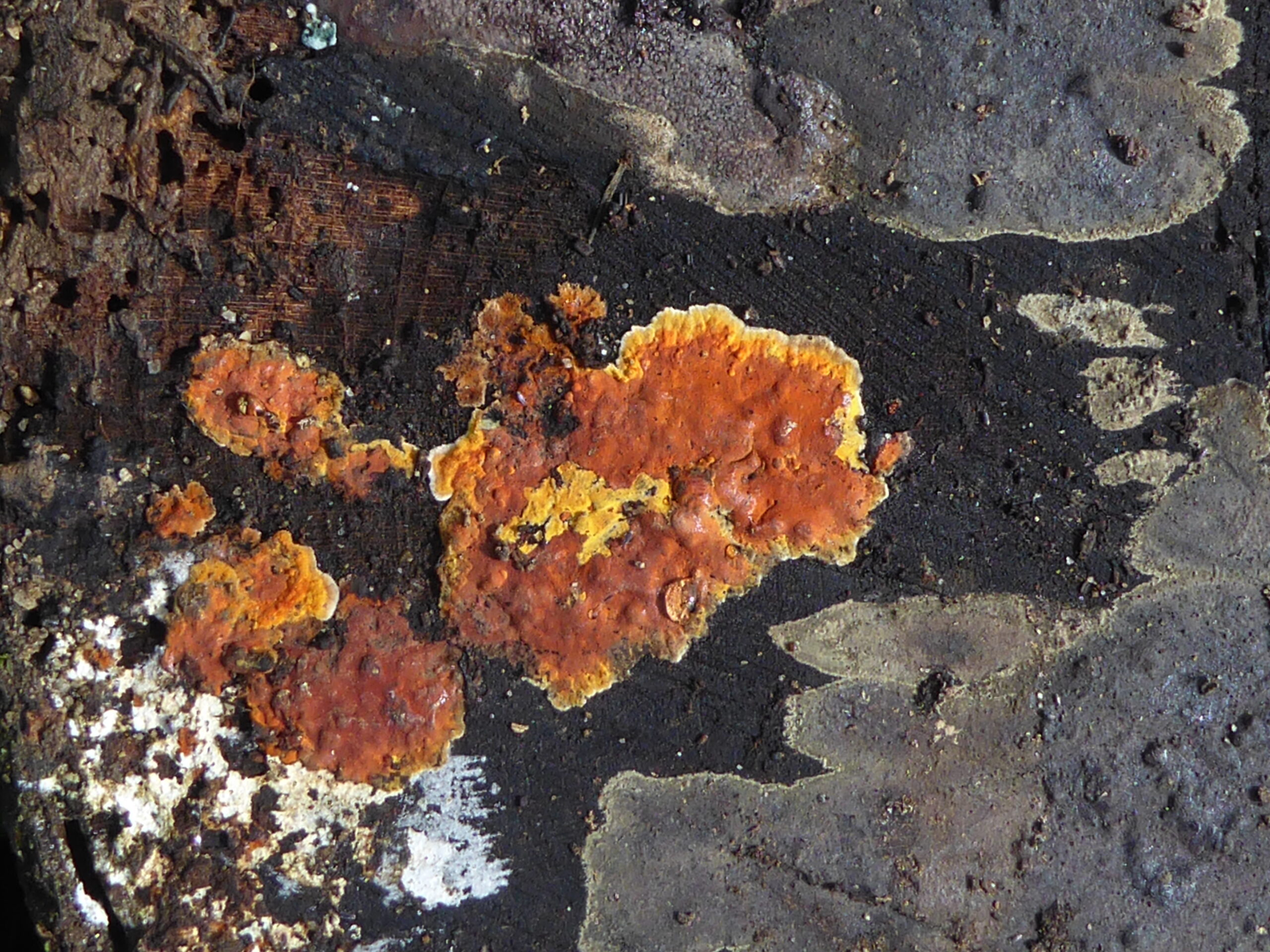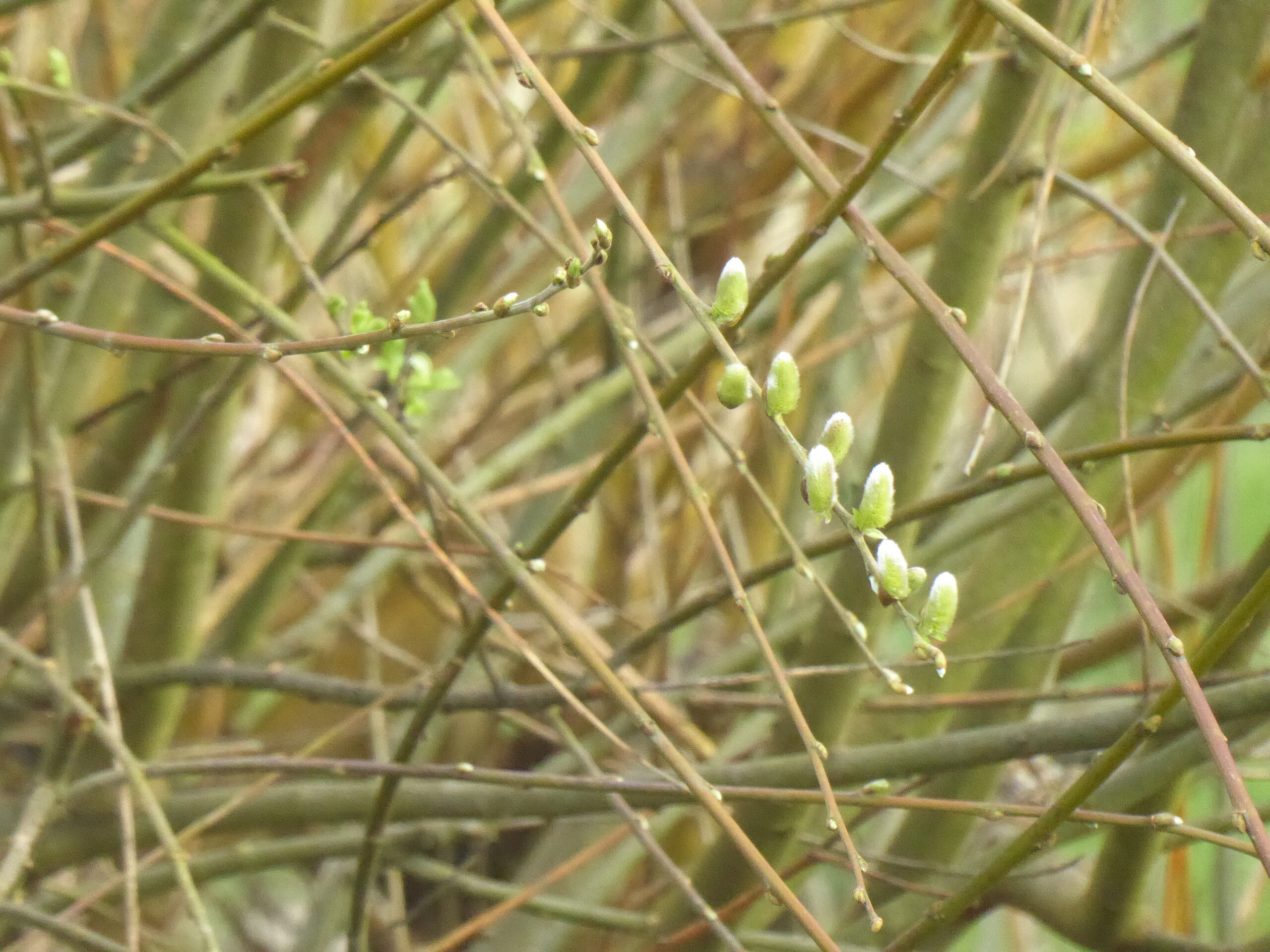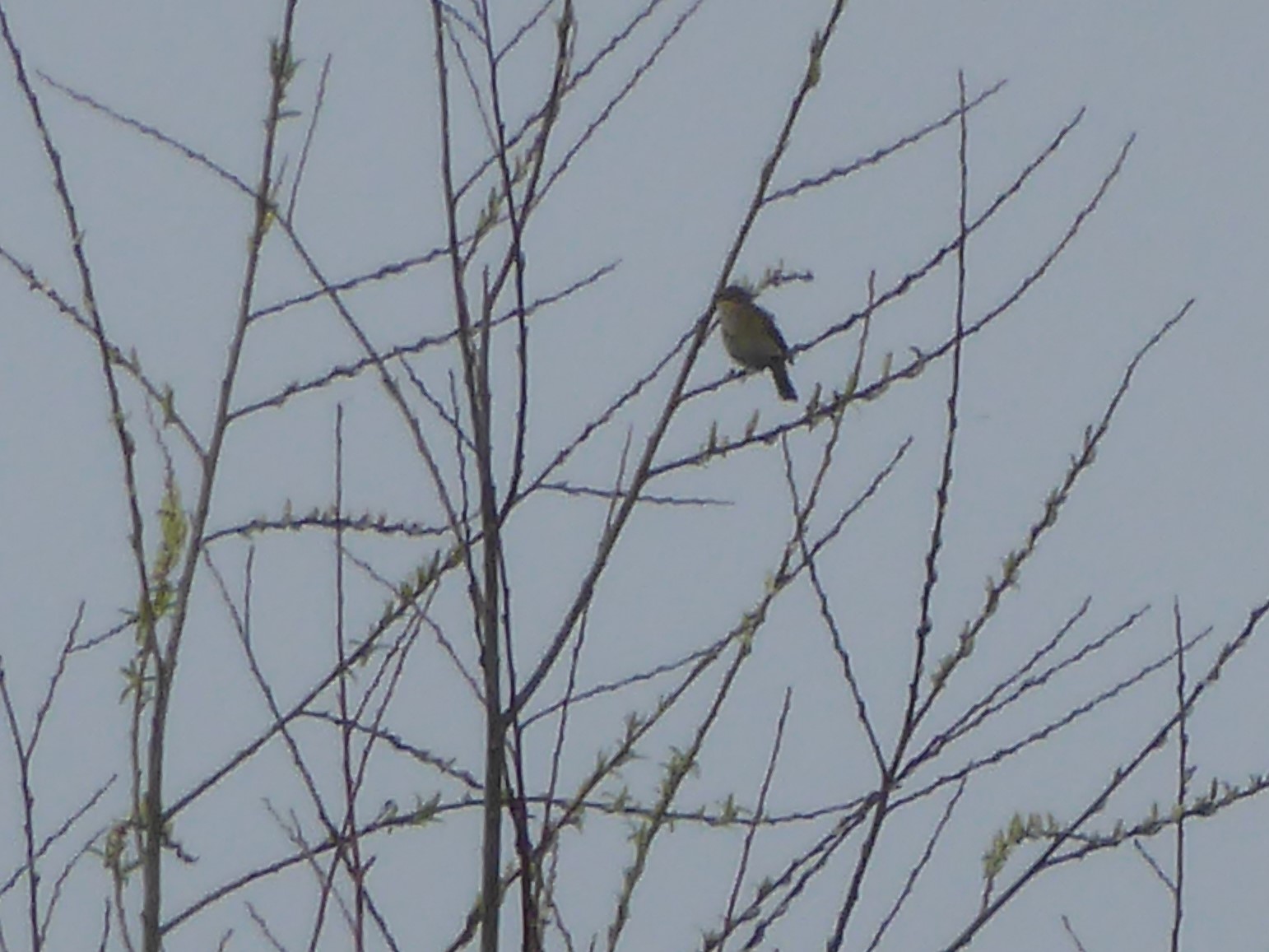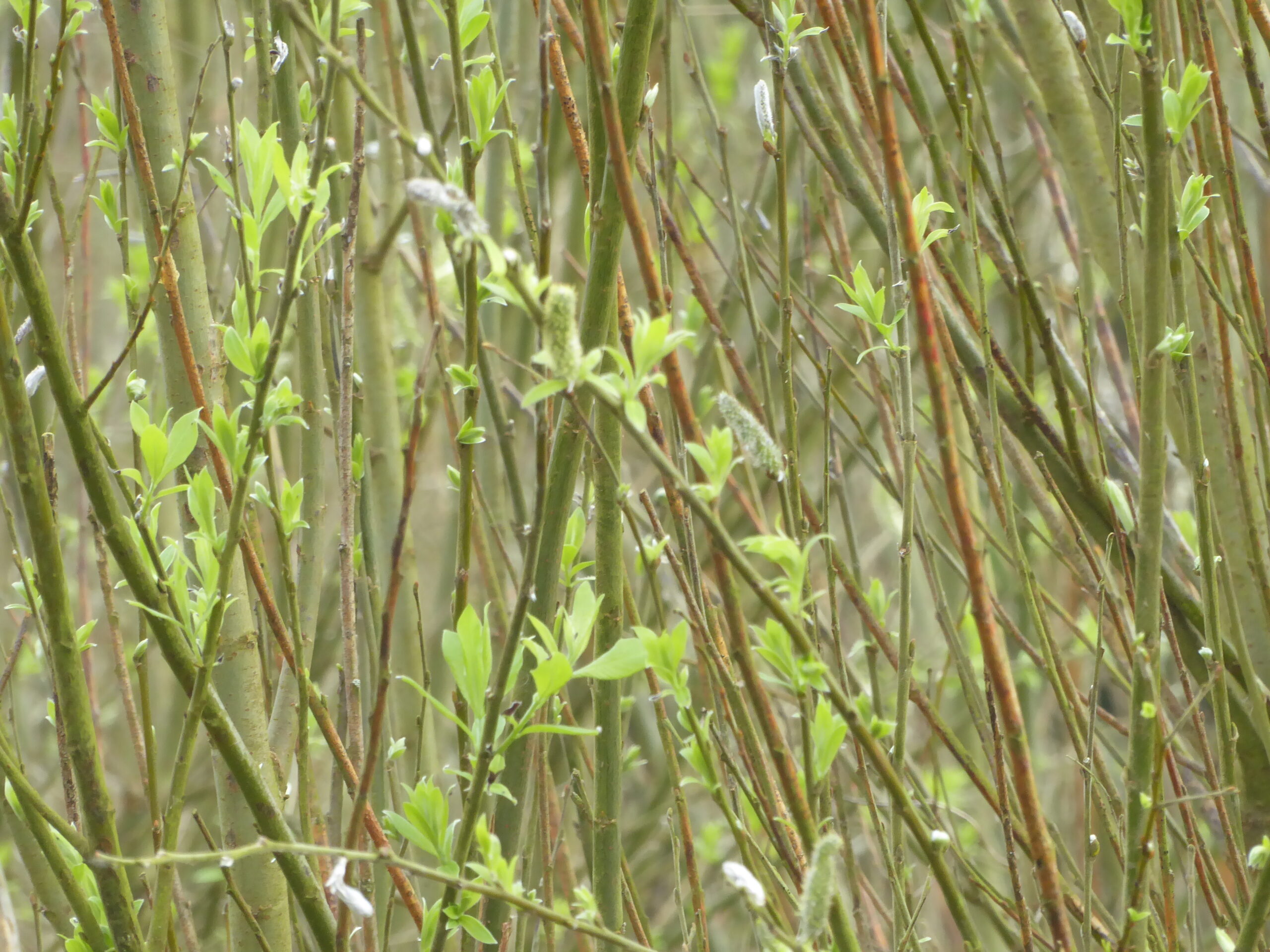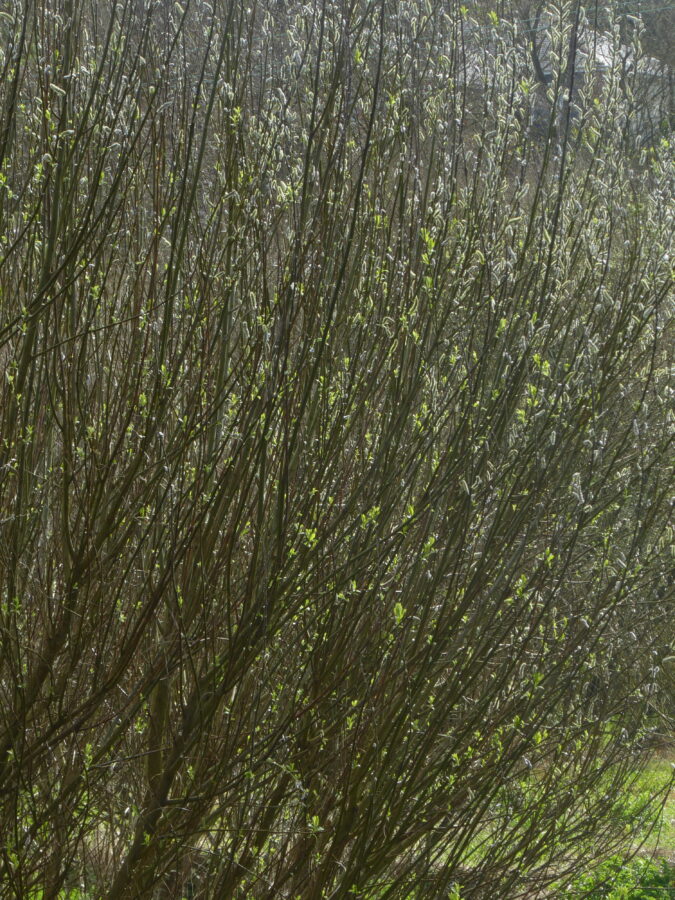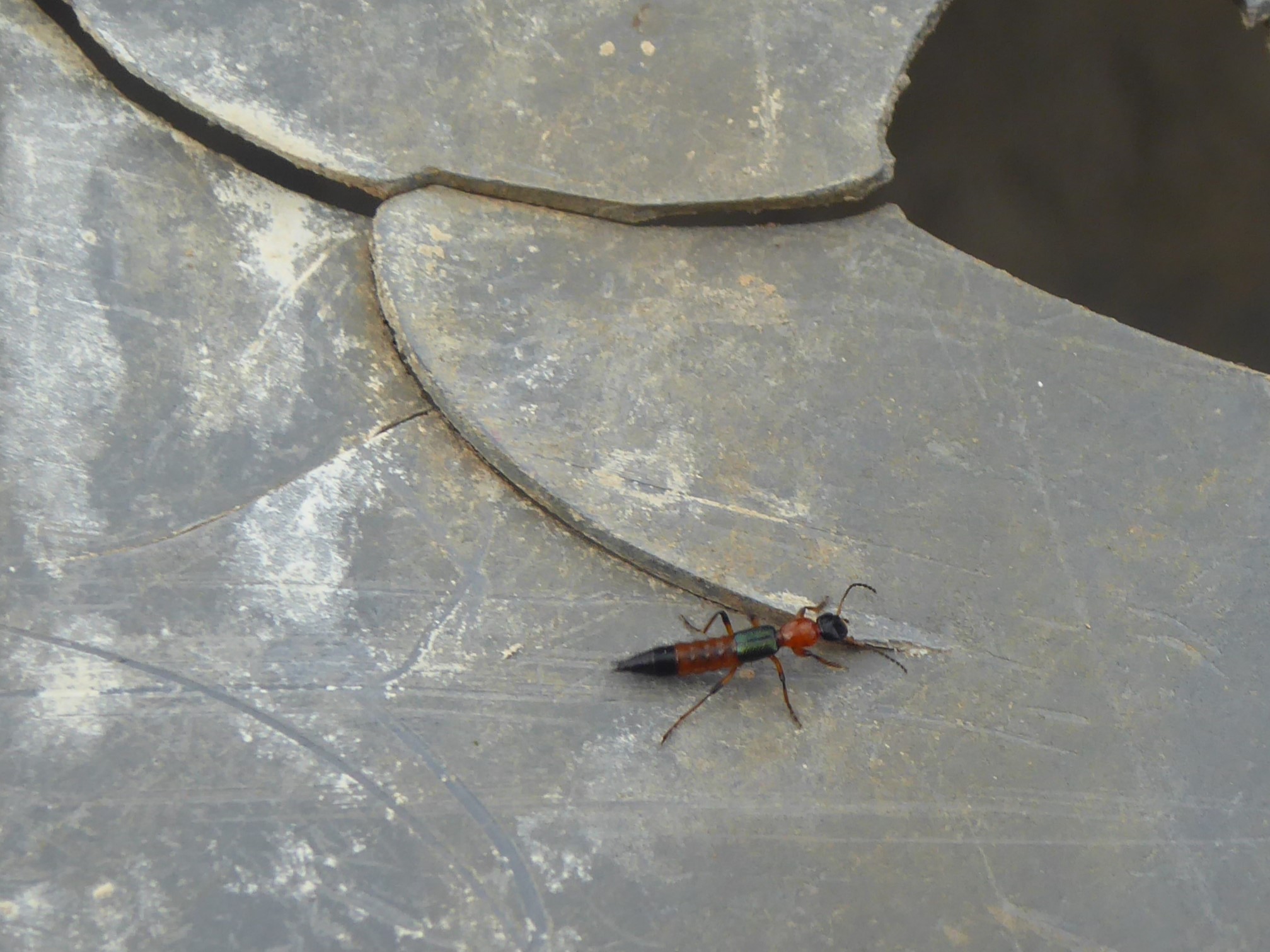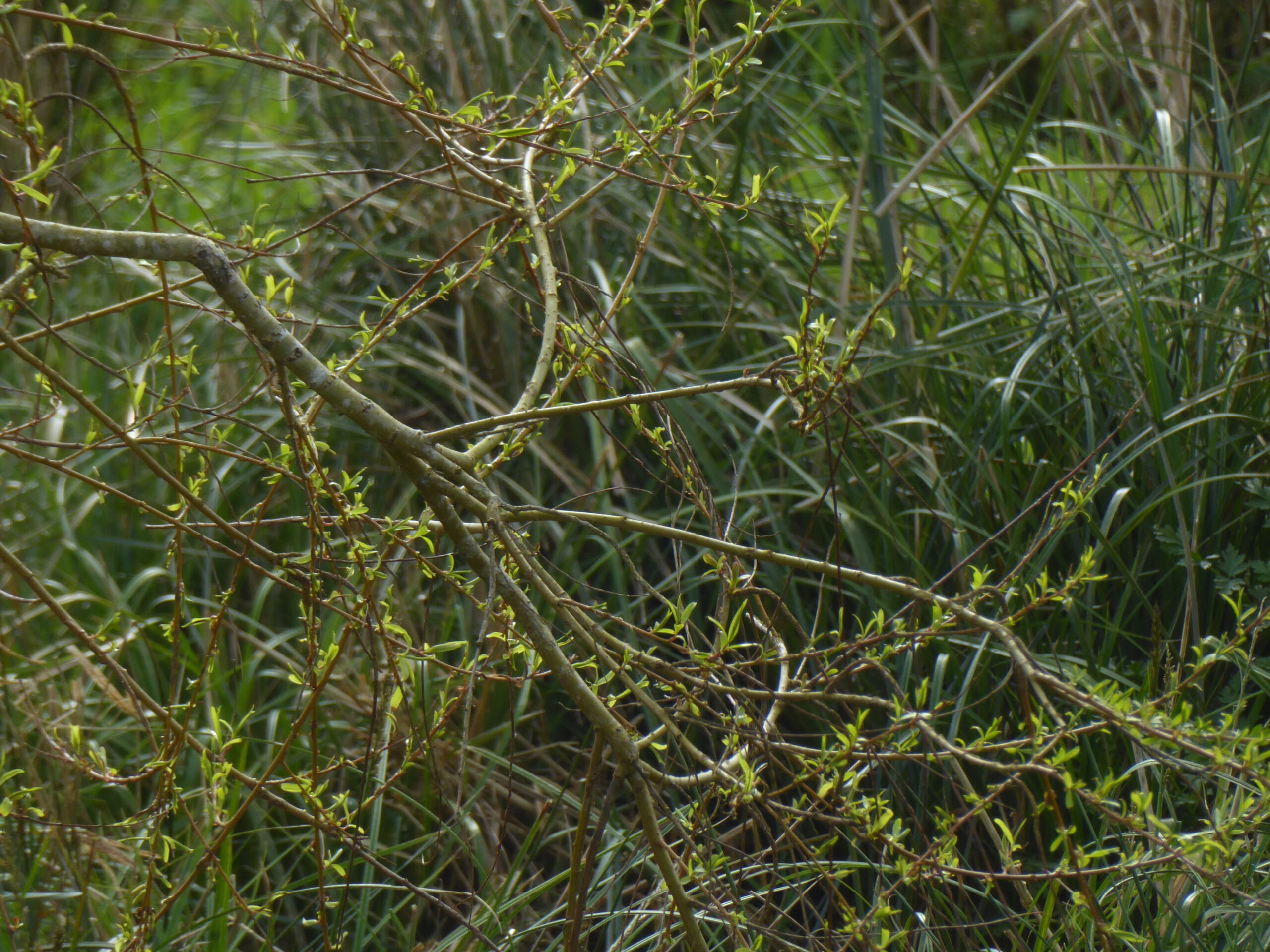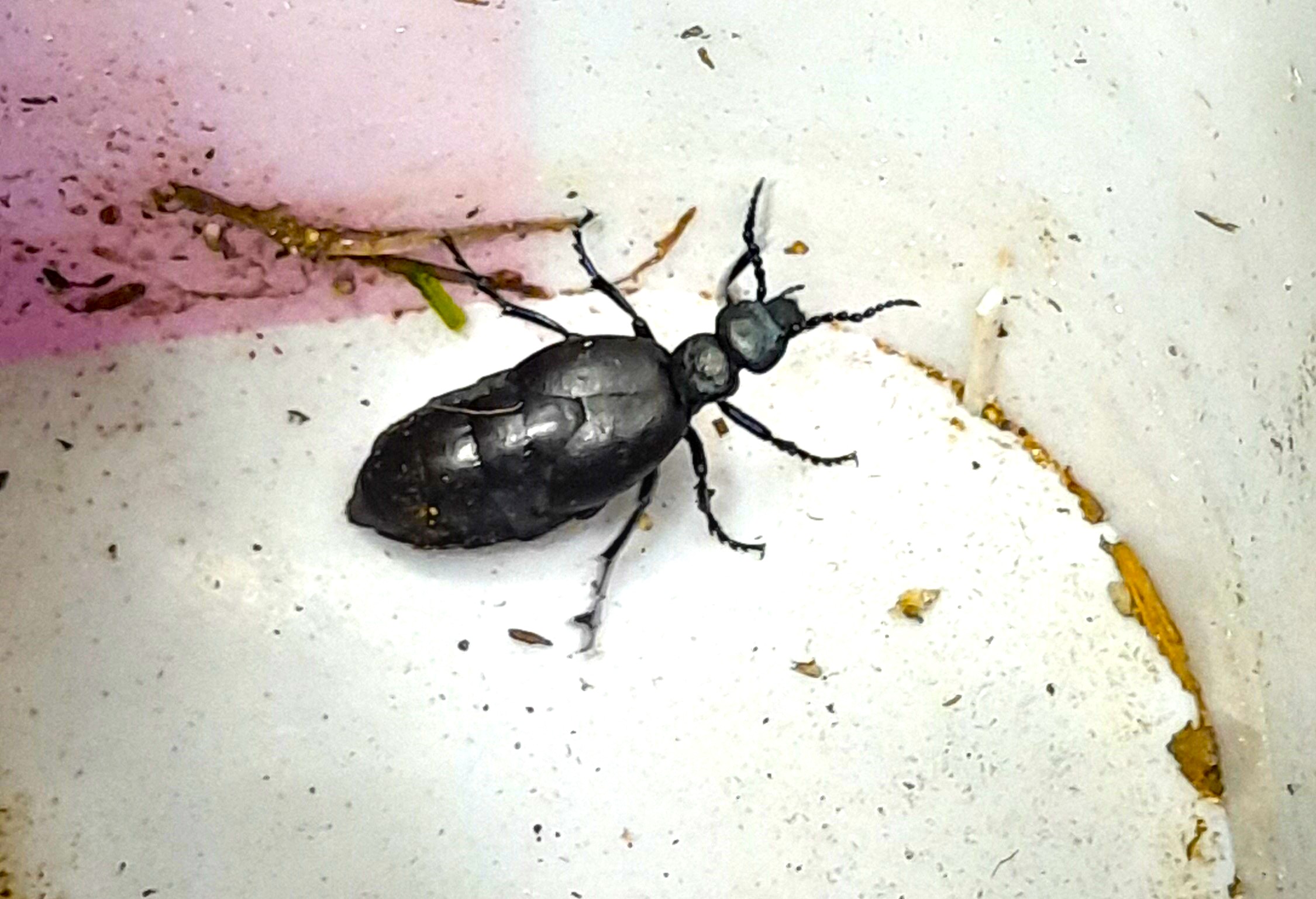It was a blustery, grey Easter Sunday and I had no expectations of seeing anything unusual in the watermeadow. However, as we looked out of our kitchen window, we could see a few birds hopping along the footpath. The smaller birds were a dunnock and a robin, but there was a larger brown bird. I dismissed it as a female blackbird, then I noticed speckles, so a thrush? I picked up the camera – I still need to log a Song Thrush – and zoomed in. This bird looked thrush-like but had very striking speckles and obvious pale eye stripes. There was another further down the path. I snapped a few photos of the pair and then got out the bird guides.
The Redwing has similar markings, but I thought it was just a winter visitor. However, the distribution map shows that redwings overwinter as far south as North Africa and migrate up to Iceland and Scandinavia for the summer. It’s nearly April, so could it be that these redwings were passing through on their way north? I studied the photos and could clearly see a reddish patch on its side. I didn’t see it take off, as it spent a long time on the bank of the stream, but if I’d been able to watch for long enough, I would have seen red flashes under its wings as it flew. It was sheer luck that we happened to be watching as the redwings visited, but how lucky were we!!
